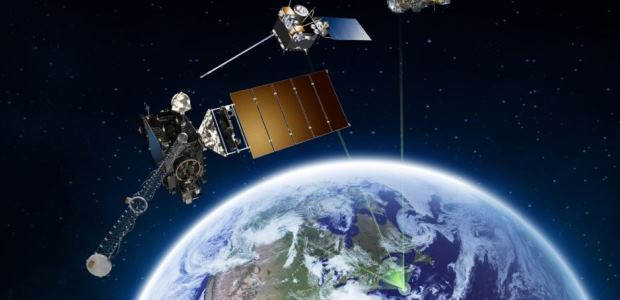
NOAA Satellites Helped Rescue 275 Last Year
"NOAA satellites aren't just for accurate weather forecasts; they play a direct role in saving lives," said RDML Tim Gallaudet, Ph.D., USN Ret., assistant secretary of Commerce for Oceans and Atmosphere and acting under secretary of Commerce for Oceans and Atmosphere. "In a real sense, SARSAT can mean the difference between life and death."
National Oceanic and Atmospheric Administration (NOAA) satellites helped in the rescue of 275 people within the United States and its surrounding waters last year, the agency reported Feb. 8, saying 186 were rescued from water, 15 from aviation incidents, and 74 were on land using personal locator beacons, or PLBs.
NOAA satellites are part of the international Search and Rescue Satellite Aided Tracking System, or COSPAS-SARSAT, which uses a network of U.S. and international spacecraft to detect and locate distress signals quickly from emergency beacons aboard aircraft, boats, and from handheld beacons. "Although NOAA satellites are more known for their forecasting and observing capabilities, they also play a vital role assisting in the rescue of those in distress at sea or on land," Secretary of Commerce Wilbur Ross said. "Because of SARSAT and close cooperation between NOAA, the U.S. Coast Guard, and the U.S. Air Force, hundreds of lives have been saved."
Once a NOAA satellite pinpoints the location of a distress signal, the information is relayed to the SARSAT Mission Control Center at NOAA's Satellite Operations Facility in Suitland, Md., and it goes from there to Rescue Coordination Centers operated by the U.S. Air Force for land rescues or the U.S. Coast Guard for water rescues.
"NOAA satellites aren't just for accurate weather forecasts; they play a direct role in saving lives," said RDML Tim Gallaudet, Ph.D., USN Ret., assistant secretary of Commerce for Oceans and Atmosphere and acting under secretary of Commerce for Oceans and Atmosphere. "In a real sense, SARSAT can mean the difference between life and death."
The 2017 rescues included:
- A pilot who had crashed near Bendigo Airport in Tower City, Pa., while attempting to land.
- A hiker experiencing an allergic reaction who triggered a distress signal with a PLB near Greeley Point, Wyo. The Air Force Rescue Coordination Center contacted the Sublette County Sheriff's Department, which used a helicopter to rescue the hiker, who had gone into shock.
Since the program began in 1982, COSPAS-SARSAT has been credited with supporting more than 41,000 rescues worldwide, including more than 8,300 in the United States and its surrounding waters. NOAA notes that beacon owners are required to register their devices online with NOAA, and that registration information often helps provide better and faster assistance to people in distress. At the end of 2017, the NOAA database contained more than 560,566 registrations.